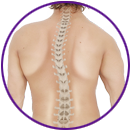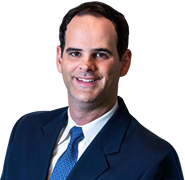Scoliosis

Scoliosis is a condition characterized by abnormal curvature of the spine causing a deviation to one side. It causes a physical deformity making the spine look like the letter “C” or “S” instead of the letter “I”. Scoliosis can affect either the mid or the lower back, but the scoliosis of the mid back is more common. Scoliosis can occur at any age. It can be classified into five categories, depending on the age group affected:
- Congenital scoliosis: The spinal deformity is already present at birth. It occurs due to an abnormality in the formation of fetal ribs and spinal bones, within the womb.
- Infantile scoliosis: It affects children below 3 years of age.
- Juvenile scoliosis: It is seen in children in the age group of 4 to 10 years.
- Adolescent scoliosis: This type of scoliosis affects teenagers and early teens (11 to 18 years)
- Adult scoliosis: Affects individuals above the age of 18 years.
Scoliosis can be caused by a wide variety of conditions, depending on which it has been categorized into:
- Idiopathic scoliosis: This comprises the group of scoliosis in which the underlying cause has not been identified. There seems to be a genetic predisposition for idiopathic scoliosis as it is more common in people with a family history of scoliosis.
- Functional or nonstructural scoliosis: This refers to a category of scoliosis wherein the spine looks curved even in the absence of any structural defect. This may result from an underlying inflammatory condition or as a compensatory effect to balance the leg inequalities or disproportionate muscle development.
- Neuromuscular scoliosis: This form of scoliosis can occur due to neurological changes which affect the muscles such as cerebral palsy, muscular dystrophy, spina bifida and polio.
- Syndrome associated scoliosis: This refers to scoliosis which develops as a part of a syndrome such as Marfan’s syndrome and skeletal dysplasia. Marfan’s syndrome is an inherited connective tissue disorder affecting the ligaments of the spine. It increases the laxity of the ligaments making them unable to hold the vertebrae firmly in place, leading to scoliosis. Skeletal dysplasia is a growth disorder characterized by dwarfism due to abnormalities in the growth and development of bones and cartilage. This may also cause scoliosis.
- Degenerative scoliosis: This form of scoliosis is associated with degenerative changes in the spine due to the ageing process such as with osteoporosis, spondylosis or degenerative disc disease.
Some patients may develop a compensatory curve to compensate for the imbalance due to scoliosis. However, this compensatory curve is less severe.
Symptoms
In the initial stage, idiopathic scoliosis may be asymptomatic. The symptoms of scoliosis depend on the cause, severity and age of the patient. Some of the common symptoms include spinal curvature, abnormal gait, uneven shoulders and hip, difference in leg lengths, more prominent rib or shoulder blade when the patient bends in the front and back pain. In severe cases it may also cause breathlessness.
Diagnosis
The diagnosis of scoliosis, by a spine specialist, involves family and medical history along with physical and neurological examination. Physical examination involves palpation of the spine; Adam’s forward bending test and plumb line test. A neurologic examination involves the evaluation of any signs of neurological injury such as numbness, muscle weakness or abnormal reflexes. X-ray of the spine in different positions such as standing and bending forward is also helpful. Other specific tests for diagnosing scoliosis include a measure of the degree of spinal curve (scoliometer), degree of vertebral rotation and skeletal maturity. Additional tests to identify the cause of scoliosis may also be conducted.
Treatment
Non-operative treatment
The treatment plan is based on the cause of scoliosis, the degree and position of the spinal curve and the age of the patient. The non-operative treatment approach of scoliosis includes:
Observation: No treatment is required for a spinal curve below 20 degrees. However, the patients are advised regular follow up visits to the spine specialist. These patients are carefully monitored for the progression of the curve.
Back bracing: A back brace may be recommended in children with a curve between 20-40 degrees to stop the progression of scoliosis and prevent surgery. Bracing is not effective in individuals with congenital or neuromuscular scoliosis.
Surgery
Surgery is recommended only in individuals with a severe curve which may affect other vital functions of the body or those with a high progression rate and surgery cannot wait till the skeletal maturity is reached. Surgery for scoliosis aims at rectifying the curve with metal rods, screws and hooks to stabilize the spine. An open or minimally invasive approach can be used for surgery.
Consult your spine specialist if you have any questions about scoliosis or the advantages and disadvantages of the available treatment options.
Other Conditions List
- Spine Deformities
- Degenerative Disc Disease
- Herniated Disc (Lumbar)
- Herniated Disc (Cervical)
- Cervical Stenosis
- Lumbar Stenosis
- Cervical Disc Protrusion
- Sciatica
- Spine Tumors
- Spondylolisthesis
- Ankylosing Spondylitis
- Adult Kyphosis
- Adult Kyphosis-Types and Causes
- Scheuermann’s Kyphosis
- Back Pain
- Neck Pain
- Mid-back Pain
- Sacroiliac Joint Dysfunction
- Spine Trauma
- Spinal Injuries at work
- Spinal Fractures
- Spondyloarthropathies
- Spondylolysis
- Facet Joint Arthritis
- Piriformis Syndrome
- Whiplash
- DISH (Diffuse Idiopathic Skeletal Hyperostosis)
- Burners and Stingers
- Myelopathy
- Degenerative Spine
- Cervical Degenerative Disorders
- Vertebral Fractures




 Menu
Menu